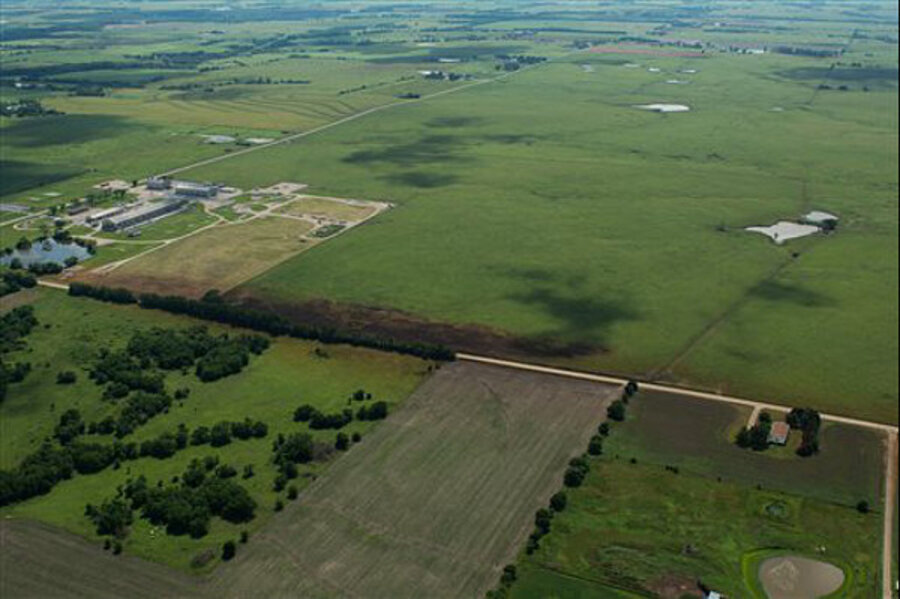Kansas pipeline eruption leaves worrisome oily residue across Olpe
Loading...
| OLPE, Kan.
Kansas health officials on Monday were at the site of natural gas pipeline eruption in eastern Kansas, where crops and trees have withered since a dark, oily plume burst from the line while crews were trying to perform maintenance.
Shrubs, crops, trees, and houses near Olpe were covered in an oily mist that the Kansas Department of Health and Environment told The Associated Press was natural gas condensate, a mix of natural gas and hydrocarbons. Since then, leaves on trees have begun to wither and soybeans have died. An unpleasant smell lingered Monday.
The accident happened Thursday along a Panhandle Eastern pipeline. Residents reported seeing the plume burst from the line and spread across nearby fields and yards, The Emporia Gazette reported. Olpe is a town of about 550 residents south of Emporia.
"I saw that smoke and thought, 'What the ---- is going on at the Panhandle?' It was all black coming out of there at 400-600 PSI," landowner Don Brown told the newspaper. "It was going everywhere."
Natural gas condensate can come in various compositions, but typically contains benzene, which the US Environmental Protection Agency has classified as a carcinogen.
"My mother-in-law's house is now a kind of gray color, and it was white before," said area resident Juanita Brown. "The trees and the grass are dying. There's guck all over my mother-in-law's house."
Kansas Department of Health and Environment spokeswoman Sara Belfry told the AP she did not know how much natural gas condensate was released. Agency crews were assessing the situation.
"We're down today doing that, and we're making sure that the pipeline company is doing everything in their efforts to clean it up correctly," Belfry said.
She said only people in the immediate area would have been affected.
"It really won't harm people in the air, but if you got it on your skin, you can wash it off," she said.
Vicki Granado, spokeswoman for Energy Transfer, which owns Panhandle Eastern, didn't know how much product was released. She said condensate and compressor oil were released "causing a light mist to settle over the area." She said cleanup would begin "as soon as all of the necessary resources have been secured." Granado didn't know how much product was released.
Belfry said the company would not be fined because it reported the accidental spill to the health department. The agency has never fined a company for a spill "as far back as our digital records go," which is the mid-1980s, Belfry said.







